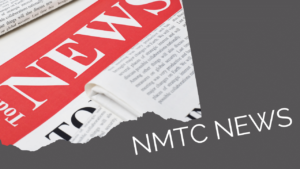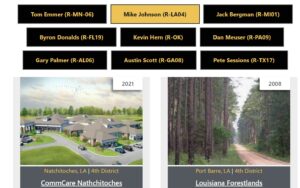The Office of the Comptroller of the Currency (OCC) and the Federal Deposit Insurance Corporation (FDIC) are soliciting comment on a new proposal to modernize Community Reinvestment Act (CRA) regulations.
OCC Summary
OCC Fact Sheet
Changes to CRA are of great interest to NMTC practioners. Bank investors are important partners in the NMTC program and provide the private sector capital necessary for CDEs to invest in meaningful community and economic development projects in underservedareas. CRA serves as one of several primary motivators for NMTC equity investors. In recent years,demand for NMTCs from CRA-motivated financial institutions has been at or near an all-time high. Higher demand for NMTCs translates to more benefit for businesses, facilities and community revitalization efforts in low-income communities. It allows community development organizations to stretch each dollar of NMTC allocation further, producing a greater community impact and reaching areas of deeper distress. Robust demand for NMTCs also helps CDEs make the vast majority (more than 75 percent) of their loans and investments in severely distressed communities that far exceed the statutory requirements for distress.
The Proposal
The good news is that the NMTC – and activities associated with it – are mentioned throughout the proposal will continue to qualify for CRA consideration under the proposal. But it is not yet clear how the expansion of qualifying activities or the changes in geographic focus will impact demand for NMTCs.
The proposal eliminates the “investment test” and instead classifies all loans, investments, other development services benefiting LMI tracts or populations as “community development.”
We are reviewing the proposal and the Coalition will be providing comments. It includes 22 specific questions (scattered throughout) where the agencies are seeking comment. We’ve isolated them and you can download all the questions in a Word DOC below. The document includes citations where you can find the sections relevant to the questions.
Below are a few sections in the NPR related to the NMTC:
Qualifying activities criteria
(a) General. Retail loans, community development loans, community development investments, and community development services that help meet the credit needs of a bank’s entire community, including low- and moderate-income communities, are qualifying activities if they meet the criteria in this section at the time the activity is originated, made, or conducted. If the activity is subsequently purchased by another bank, it is a qualifying activity if it meets the criteria in this section at the time of purchase.
https://www.occ.gov/news-issuances/federal-register/2019/nr-ia-2019-147-federal-register.pdf (Page 193)
Qualifying Community Development Activities
The proposal broadly outlines the community development loans and investments that would qualify. Below, we’ve excerpted some sections relevant to CDEs and CDFIs:
Community development loans, community development investments, and community development services. A community development loan, community development investment, or community development service is a qualifying activity if it provides financing for or supports:
(1) Affordable housing, which means:
…
(ii) Owner-occupied housing purchased, refinanced, or improved by low- or moderate-income individuals or families, except for home mortgage loans provided directly to individuals or families;
(2) Another bank’s community development loan, community development investment, or community development service;
…
(4) Community support services which means activities, such as child care, education, health services, and housing services, that partially or primarily serve or assist low- or moderate-income individuals or families;
(5) Essential community facilities that partially or primarily benefit or serve:
(i) Low- or moderate-income individuals or families; or
(ii) Low- or moderate-income census tracts, distressed areas, underserved areas, disaster areas consistent with a disaster recovery plan, or Indian country; (
6) Essential infrastructure that benefits or serves:
(i) Low- or moderate-income individuals or families; or
(ii) Low- or moderate-income census tracts, distressed areas, underserved areas, disaster areas consistent with a disaster recovery plan, or Indian country;
,,,
(8) Federal, state, local, or tribal government programs, projects, or initiatives that:
(i) Partially or primarily benefit low- or moderate-income individuals or families;
(ii) Partially or primarily benefit small businesses or small farms as those terms are defined in the programs, projects or initiatives; or
(iii) Are consistent with a bona fide government revitalization, stabilization, or recovery plan for a low- or moderate-income census tract; a distressed area; an underserved area; a disaster area; or Indian country;
(9) Financial literacy programs or education or homebuyer counseling;
(12) A Small Business Administration Certified Development Company, as that term is defined in 13 CFR 120.10, a Small Business Investment Company, as described 13 CFR part 107, a New Markets Venture Capital company, as described in 13 CFR part 108, a qualified Community Development Entity, as defined in 26 CFR 45D(c), or a U.S. Department of Agriculture Rural Business Investment Company, as defined in 7 CFR 4290.50;
(13) Ventures undertaken, including capital investments and loan participations, by a bank in cooperation with: a minority depository institution, women’s depository institution, Community Development Financial Institution, or low-income credit union, if the activity helps to meet the credit needs of local communities in which such institutions are chartered, including activities that indirectly help to meet community credit needs by promoting the sustainability and profitability of those institutions and credit unions.
Qualifying Activities Illustrative List
The proposal also provides a non-exhaustive list of examples of activities that would qualify. A quick scan of that list reveals many activities that overlap with NMTC projects. Three examples explicitly mention the NMTC:
Loan to a small business to purchase real estate related to a New Markets Tax Credit project, as provided for in 26 U.S.C. 45D.
Public welfare investment, under 12 CFR part 24, to a qualified Community Development Entity that will provide financing for a food market to build a 180,000 square foot refrigerated warehouse and food distribution facility.
An investment in a New Markets Tax Credit-eligible Community Development Entity to fund a mixed-use project that will include affordable housing for LMI individuals and families and retail space for small businesses.
https://www.occ.gov/news-issuances/federal-register/2019/nr-ia-2019-147-federal-register.pdf (Pages 98 and 100)
Find the full list: https://www.occ.gov/news-issuances/federal-register/2019/nr-ia-2019-147-federal-register.pdf (pages 86-101)
Other Notable Proposals
Utilizing the NMTC’s poverty threshhold
Interestingly, the proposal references the NMTC’s criteria for poverty:
The proposal also would revise the definitions of distressed nonmetropolitan middle-income area and underserved nonmetropolitan middle-income area to include additional census tracts where there are unmet financial needs. Specifically, the requirement that a distressed area be a nonmetropolitan area would be removed to recognize that there may be urban areas that experience high rates of poverty, unemployment, or population loss and need financial resources. Although the agencies also considered lowering the poverty threshold in the definition of distressed area to as low as 15 percent, they decided to retain the 20 percent threshold because it is consistent with the threshold used in some other Federal programs that are intended to benefit low-income communities, such as the New Markets Tax Credit program.
Calculating the qualifying activities value
Qualifying activities would be quantified as follows:
• Qualifying loans and CD investments would be valued based on their average month-end on-balance sheet dollar value, except that qualifying retail loans originated and sold within 90 days of their origination date would be valued at 25 percent of their origination value.
• Legally-binding commitments to invest that are reported on the Call Report, Schedule RC-L, would be valued based on their average month-end dollar value.
• Qualifying commitments to lend would be valued based on the average month-end dollar value of the allowance for credit losses on those commitments that are reported on the Call Report, Schedule RC-G.
• CD services and monetary or in-kind donations would be credited at the value of the monetary donation or in-kind activity or at the hourly salary as estimated by the Bureau of Labor Statistics for the job category of the service provided for the number of hours provided. If a CD activity partially benefits the intended population or area, then the quantified value would be a pro-rata share of the full quantified dollar value of the activity, as described above, equal to the percentage of partial benefit.
….
A bank would calculate its bank-level and assessment area qualifying activities values by taking the sum of the quantified values of all qualifying activities, adjusted by any applicable multiplier, as follows:
Qualifying loans on balance sheet for at least 90 days and CD investments
PLUS
Twenty-five percent of the origination value of qualifying loans sold within 90 days of origination
PLUS
CD Services and Monetary and In-Kind Contributions
https://www.occ.gov/news-issuances/federal-register/2019/nr-ia-2019-147-federal-register.pdf (Pages 36-37)
Financial Literacy Programs
The proposal adds a criterion for financial literacy programs or education or homebuyer counseling that benefits individuals of all income levels. The agencies believe that financial literacy is an important issue irrespective of income level. Moreover, some stakeholders expressed support for providing CRA credit for financial literacy programs for all individuals. These stakeholders cited high levels of student and credit card debt and a lack of retirement and other savings as reasons for providing broader consideration of financial literacy-related activities.
https://www.occ.gov/news-issuances/federal-register/2019/nr-ia-2019-147-federal-register.pdf (Page 28)





